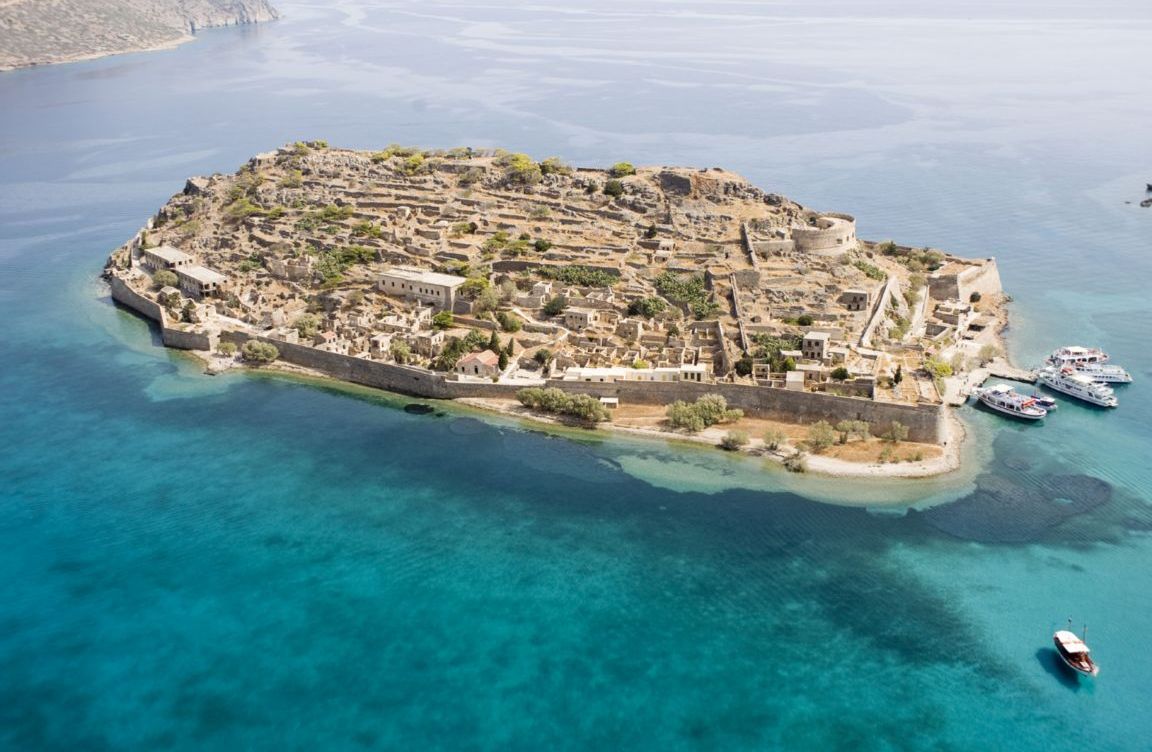 The islet of Spinalonga is located at the north entrance in the Gulf of Elounda, in the province of Merambellos in the Prefecture of Lassithi, Crete. It covers an area of 85 acres and is located at 53 meters altitude. The fortress of Spinalonga is kept in a good condition. In recent years, local authorities have been trying to enter Spinalonga to the UNESCO World Heritage Sites.
The islet of Spinalonga is located at the north entrance in the Gulf of Elounda, in the province of Merambellos in the Prefecture of Lassithi, Crete. It covers an area of 85 acres and is located at 53 meters altitude. The fortress of Spinalonga is kept in a good condition. In recent years, local authorities have been trying to enter Spinalonga to the UNESCO World Heritage Sites.
The ancient name of Spinalonga was Kalydon, but after its seizure by the Venetians, the name changed. Venetians listened to the Cretans’ expression “Stin Elounda” (in Elounda) and they could not comprehend exactly what Cretans said, thus they pronounced it in Latin “Spina Lunga” which means “long thorn”. In this way the islet took its actual name. In addition, the name of the Olus city is linked to a second version of the name “Spinalonga”. According to this version the name occurred in the 13th Century by the Venetian conquerors who did not know the Greek language and because of this they paraphrased the place name “Stin Olounda” (in Olounda) in Spinalonte in 13th Century and later in Spinalonga.
 During Minoan era, there was Olunites’ castle-fortress on the island which was built to protect the harbor of the ancient state Olus. Olus was deserted in the 7th century, because of Arab invasions in the Mediterranean Sea, until the middle of the 15th century when the Venetians took advantage of this area and started gathering salt. Consequently, the area gained significant value as a center of trading and it was systematically reoccupied. Moreover, the Fall of Constantinople in 1453 made the Venetians fortify the island.
During Minoan era, there was Olunites’ castle-fortress on the island which was built to protect the harbor of the ancient state Olus. Olus was deserted in the 7th century, because of Arab invasions in the Mediterranean Sea, until the middle of the 15th century when the Venetians took advantage of this area and started gathering salt. Consequently, the area gained significant value as a center of trading and it was systematically reoccupied. Moreover, the Fall of Constantinople in 1453 made the Venetians fortify the island.
On the ruins of the ancient castle, the Venetians built a strong fortress (1579-1586). During the Venetian occupation, the fort was used for military purposes. During the Cretan War, refugees and rebels (Hainides) resorted to Spinalonga. By having the island as a base, they harassed the Turks. Their action lasted as long as the Venetians held the fortress, since in peace treaty of Chandax it was stated that Spinalonga will remain in the domain of Venice. Turks occupied the island of Spinalonga in 1715 and gradually many Ottoman Turks resided there. In the late 19th century, political developments and Christians’ revolutionary actions forced Ottoman inhabitants of Spinalonga to emigrate.
Since 1897 and for about a period of a year, French military forces have been barracked in Spinalonga.
In 1903, the Cretan State decided to create a Leprosarium in Spinalonga in order to provide a concerted aid to those suffering from Hansen’s disease. In 1957, the Leprosarium closed since the lepers were healed because of the discovery of antibiotics and thus the island was finally deserted.
Should you need additional information please visit the relevant page at the site of the Ministry of Culture.